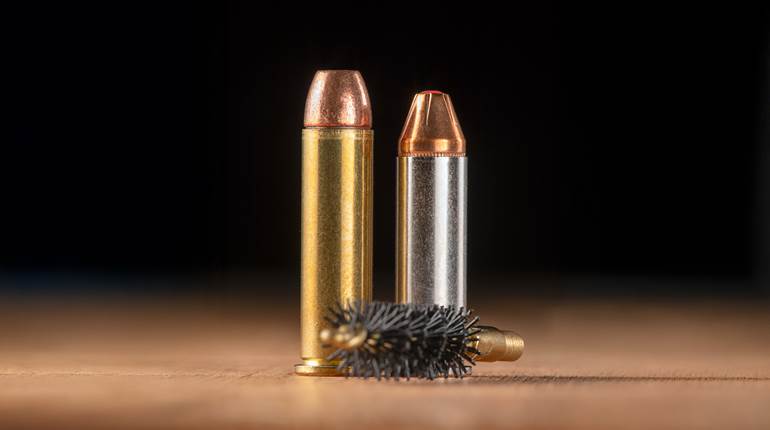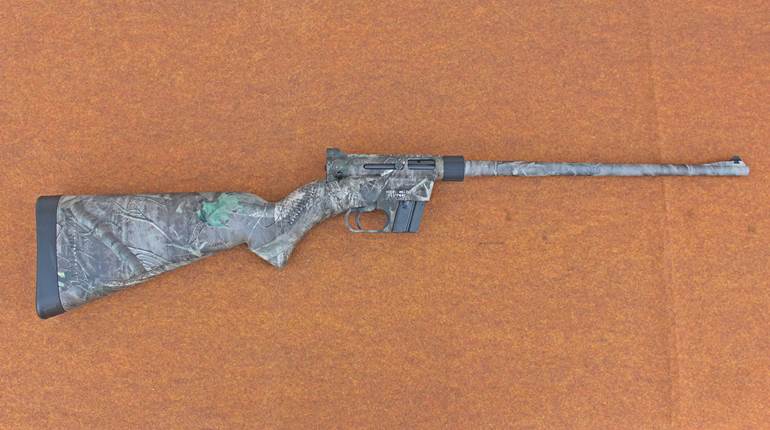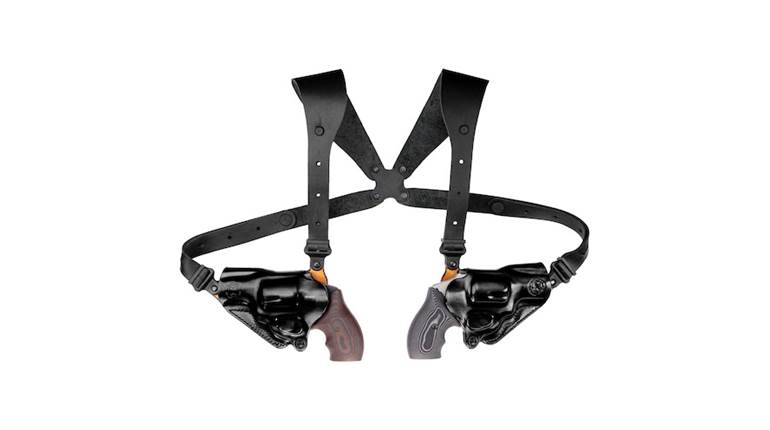
It was back in the mid 1980s when law enforcement agencies and civilians alike began switching out their double-action revolvers chambered in .38 Spl. and .357 Mag. for semi-automatic pistols with magazine capacities of 15 rounds or more. However, nearly 30 years after the great semi-auto migration began, many gun owners have found themselves living in states with anti-gun lawmakers who are working diligently to restrict, and in some cases ban, semi-automatic pistols and their full-capacity magazines.
As the legal boundaries surrounding semi-autos for civilians continue to shift and blur in some regions of the country, a quiet but important, personal-protection renaissance is taking place. More shooters are choosing to re-evaluate the merits of compact revolvers for concealed carry.
One type of wheelgun that has remained a popular personal-protection tool since its introduction in the 1950s is the Smith & Wesson series of J-frame revolvers. A model that successfully balances the old-school functionality of this classic design with up-to-date features is the Model 640 Pro Series chambered in .357 Mag.
Smith & Wesson currently offers its J-frames with three hammer configurations including a traditional exposed hammer, a shrouded hammer, and a completely concealed hammer. The Model 640 is of the concealed hammer, double-action-only trigger variety. The advantages of this design include a sleek no-snag profile and fewer entry points for dust and dirt into the action. Some self defense gurus tout this design as being legally advantageous because it eliminates the did-you-cock-the-hammer-first argument if a self defender ends up in court. Others praise it for its simplicity of operation and for its predictable trigger pull which remains consistent with every shot fired.
The Model 640 is constructed entirely of rugged weather and wear resistant stainless steel with a brushed finish and an unloaded weight of 23 ozs. The barrel is 2.125” long, which is one of the most common barrel lengths for J-Frames. The 5-shot cylinder swings out for loading when the wedge-shaped cylinder release on the left side of the frame is pressed forward towards the muzzle. This model sports a slim profile, combat style, finger-grooved, synthetic grip with a light ovoid texturing along the sides of the panels. The grip is narrow enough for easy concealment with a minimal extension at the base to give the little finger a place to rest.
The rounded integral trigger guard houses a smooth-faced combat trigger. This model does not have the key-activated internal action-locking system found on many of the larger Smith & Wesson revolvers these days. Therefore, as with most other double-action-only revolvers, the only external or manual safety the gun has is a relatively long and heavy trigger pull.
These triggers often defy measurement with a Lyman's digital trigger gauge since the device's maximum reading is 12-pounds. But the 640 demonstrated a smooth 11 lb. 9 oz. pull. 
Because this version of the 640 is part of the Pro Series line, it has additional in-house upgrades that set it squarely in between the standard production models and the Performance Center guns. The barrel is fluted and the under lug is beveled at the muzzle for easier holstering. The action has been polished and the cylinder is milled to accept full moon clips. The standard rudimentary sight system has been replaced with a set of dovetailed (front and rear) Trijicon 3-Dot night sights. This package of upgrades adds about $110 dollars to the suggested retail price. But considering that it could cost that much for just an action job or a set of night sights alone, it's a bargain. For concealed carry, I wanted an accessory set that reflected the same blend of old-school/new rule features as the revolver. Crimson Trace (CTC) provided just what I was looking for. The hand-filling LG-305 extended laser grip is designed to fit a wide variety of round butt J-Frames. The intuitive activation switch is activated when the grip is squeezed. The over-molded rubber surface provides an excellent level of control when shooting .357 Magnum ammunition. The 5mW red laser is powered by two #2032 button-cell batteries for over 4-hours of run time. Fully adjustable for wind and elevation, this grip produces a bright 0.5-inch diameter dot at 50 Feet. A laser sight like this one makes for very quick target acquisition. 
To complement this grip, Crimson Trace has teamed up with Mitch Rosen Gun Leather to produce a CTC logo version of the precision wet-molded steer hide 5JR-EXP belt slide holster. With belt loops sized to fit up to 1.5” wide belts and a black finish, this holster looks great, rides comfortably and allows for a quick draw from concealment.
At the shooting range, informal testing consisted of feeding the 640 Pro Series with a variety of .38 Spl. and .357 Mag. ammunition. With rounds ranging from target grade loads to defensive hollow points, the revolver loaded, fired and ejected everything with aplomb. Working off of the bench with targets set from 3 to 15 yards, it was easy to form center-of-mass groups using a medium speed trigger press (too fast causes the muzzle to twitch, too slow makes the trigger unusably heavy).
Selecting the right defense-grade ammunition for concealed carry is important with any model or caliber of handgun. But when it comes to snub guns, evaluating the loads for felt recoil can be as important as checking for accuracy and reliability. Using a reduced or moderate recoil load is not about how tough or wimpy the shooter may be. Instead, the focus should be on correct and repeatable shot placement and regular practice sessions. In other words, use the load that best suits your needs and let everyone else keep their own council.
With this in mind, the formal accuracy testing of the 640 was conducted with what I've found to be controllable rounds in snubby wheel guns. Five 5-shot groups of each load were fired from a bench rest, using the revolver's factory installed night sights, into targets set at 7-yards. The most comfortable to shoot defensive round was the Hornady Critical Defense Lite .38 Special loaded to standard pressures with a 90-grain FTX bullet. Specifically designed for modest recoil in short-barrel revolvers, it produced a best single group of 1.56” with a five group average of 1.86”.
A .357 Mag. load I've been using for years in small wheel guns is the Winchester USA Brand (white box) 110-gr. semi-jacketed hollow point. This cartridge offers a controllable level of felt recoil at an affordable price. Its tightest group was 2.11” with an average of 2.31”.
The final contestant was the HPR HyperClean .357 Mag. 125-gr. jacketed hollow point. Generally speaking, I find the 125-gr. loads to produce the maximum amount of recoil I can reasonably practice with in a J-Frame. Those who prefer heavier bullets are more than welcome to use them but I think they are put to better use in full-size revolvers. The HPR load yielded a best group of 1.75” with an average of 1.97”.
Just like other handguns that have been trimmed down for easy concealed carry, the J-Frame revolver has its limitations. But the compact 5-shot, like the Smith & Wesson .357 Mag. 640 Pro Series, has a long way to go before it becomes obsolete. As one of the most thoroughly accessorized handguns on the market, holsters, grips and loading devices are plentiful and easy to find. With a sleek no-stag profile and easy to see night sights, this little stainless steel wheel gun offers plenty of punch for up close and personal self-defense situations.
Specifications
Manufacturer: Smith & Wesson
Model: 640 Pro Series
Action: Double-Action Only Revolver
Caliber: .357 Mag./.38 Spl.
Finish: Satin Stainless Steel
Grip: Synthetic Finger Grooved
Hammer: Internal
Sights: Dovetail Tritium 3-Dot Night Sight
Barrel Length: 2.125”
Overall Length: 6.625”
Weight: 23 Ounces
Capacity: 5 Rounds, Accepts Full Moon Clips
Twist: 1:18” RH
Rifle Grooves: 6
Accessories: Hard Case, Owner's Manual, Lock
MSRP: $839




































